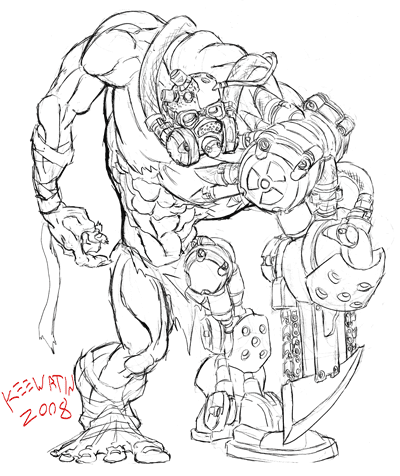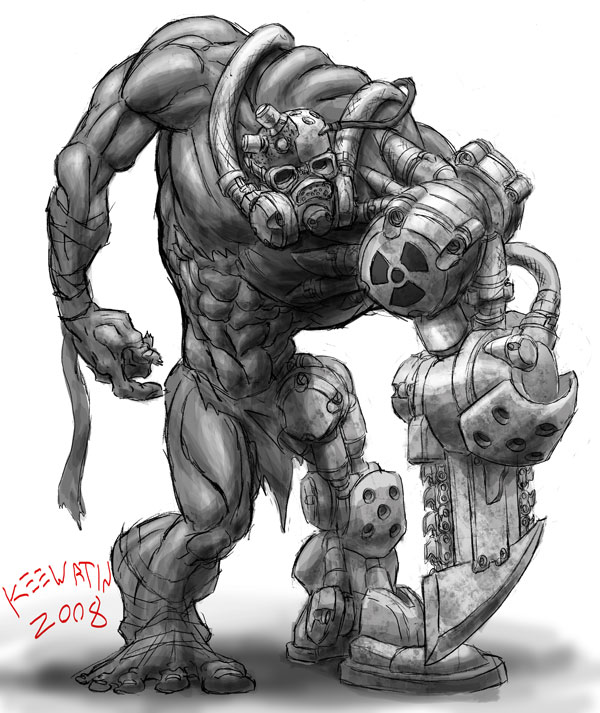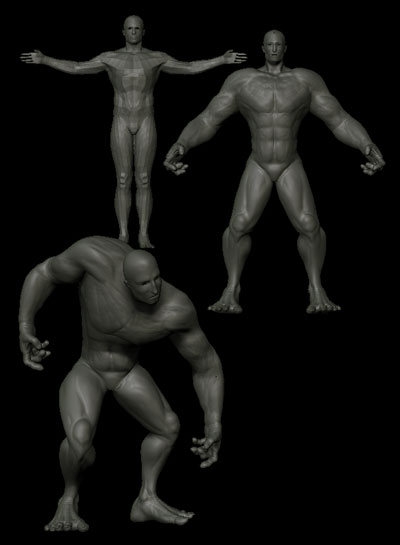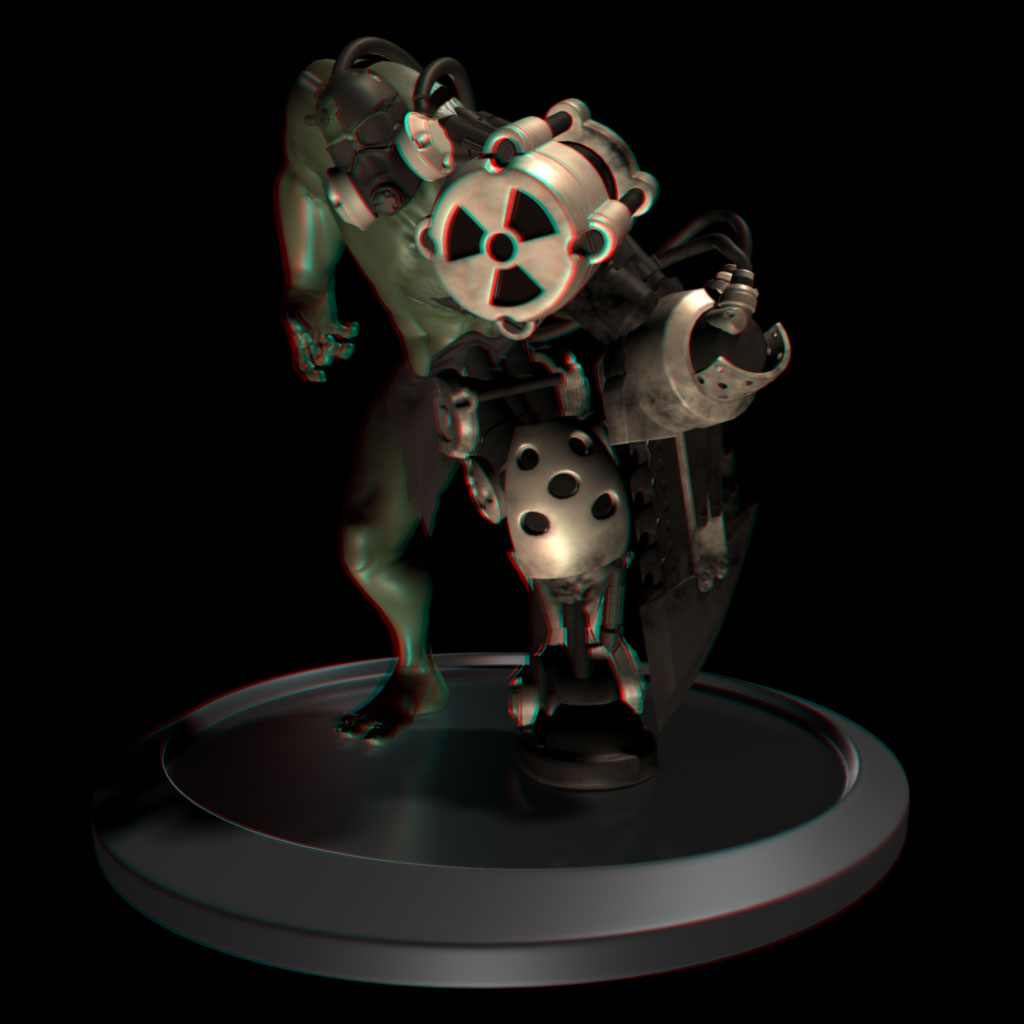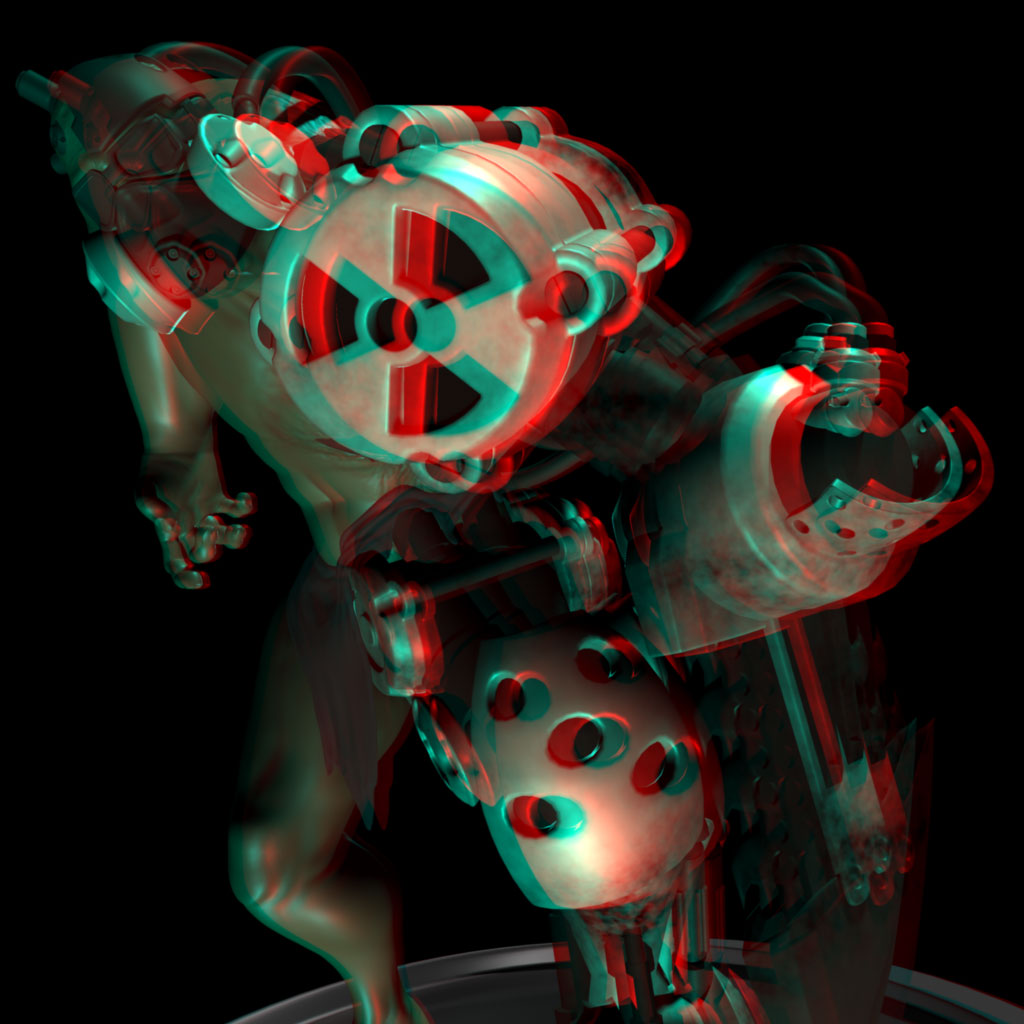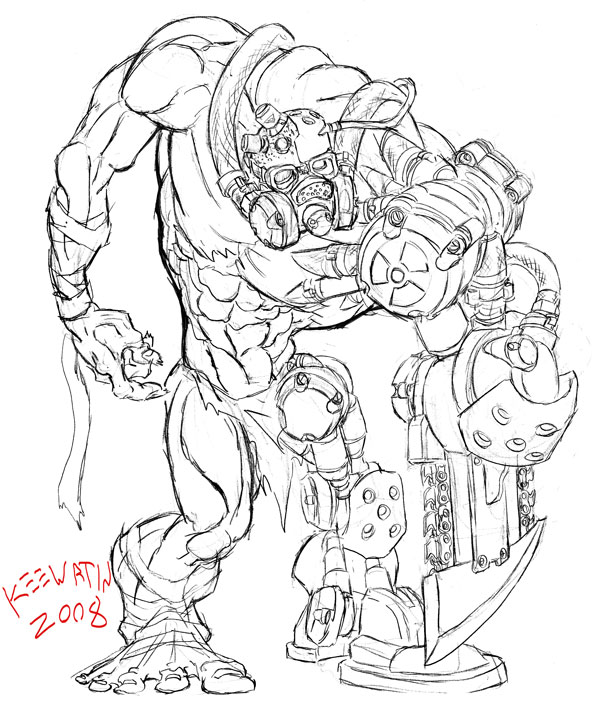
Fig01: The pencil sketch by Steve Sanderson [aka Keewatin]
Fig01: The pencil sketch by Steve Sanderson [aka Keewatin]
Concept art:
At first the process starts with a concept sketch done by Steve Sanderson. Pencil and paper are the most common medium at the early stages of the concept [Fig01]. The point of it is to quickly and effectively design and try different ideas on the creature without being interrupted or distracted by the technical issues of 3D modeling. It also helps the art director to visualize and approve the concept before it goes off to the modellers and spend valuable time and money.
Fig02: The process of the shading of the sketch
Fig03: The final shaded concept art
After scanning the sketch, Steve painted in the shading, shadows and highlights to differentiate the different materials and communicate more details of design to the modellers. He used Photoshop and a Wacom Tablet for this step because of ability to paint on separate layers and have full control of each layer separately without affecting the initial line sketch. [Fig02&03]
